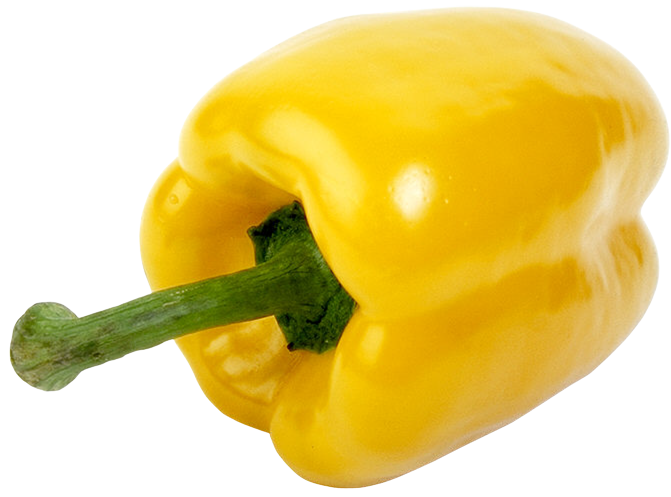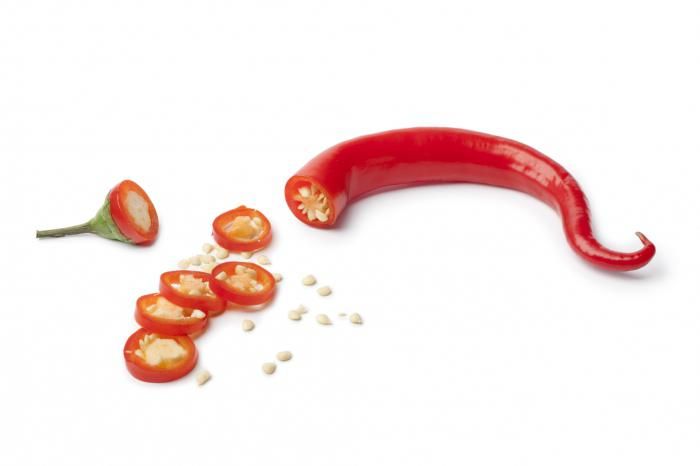Baby food red pepper
Red Pepper + Sweet Potato Baby Food Puree
Published on in Recipes, Stage 2 Baby Food Purees and Mashes
Please share!
1650 shares
As an Amazon Associate, I earn from qualifying purchases. This post may contain affiliate links. Read my disclosure policy.
If you’ve been searching for a red pepper baby food recipe, look no further! This stage 2 Red Pepper + Sweet Potato Baby Food Puree is perfect for your 6 month+ baby.
Jump to Recipe
What health benefits does this red pepper + sweet potato baby food puree provide?
This puree is loaded with health benefits for your baby!
Red peppers contain a ton of vitamin C and are also high in antioxidants.
Sweet potato is also high in antioxidants and fiber.
Cumin aids in digestion and also boosts immunity.
Try these yummy recipes for the whole family!
- Orange Creamsicles
- Mango Smoothie Bowl
- Teriyaki Glazed Corn
- Corn & Black Bean Quesadilla
- Berry, Banana & Avocado Smoothie
How long will homemade baby food last?
Fresh, homemade baby food will last in the refrigerator for 3 days. Once the 3 days have passed, the remaining food should be disposed of for safety reasons.
If you make this or any other baby food recipes in bulk, it can be stored it the freezer for up to 3 months. Click here for more information, tips and tricks on storing homemade baby food.
By the way, these baby food freezer storage trays are PERFECT for freezing baby food. They come with snug fit lids that prevent spills and freezer burns, and they stack so easily.
How do you make Red Pepper + Sweet Potato Baby Food Puree?
Ingredients:
- 1 cup of diced red bell pepper
- 1 cup of diced sweet potato
- 1/4 teaspoon of cumin
- water, formula or breast milk as needed
Equipment:
- Baby Bullet, food processor or blender
- pot
- steamer basket
Step 1: Fill a pot with 1-2 inches of water then place a steamer basket in it. Place the pot on the stove and turn the heat on to medium-high.
Place the pot on the stove and turn the heat on to medium-high.
Step 2: Wash, peel and dice 1 cup of sweet potato. Wash, de-seed and dice 1 cup of red bell peppers.
Step 3: Add the sweet potato to the steamer basket and cover the pot with a lid. Steam for 5 minutes.
Step 4: Add the red pepper to the steamer basket and cook, covered, for an additional 10 minutes, or until the sweet potato is soft.
Step 5: Let the sweet potato and red pepper cool down slightly. Then add them, along with the cumin, to a blender. Blend until smooth, adding just enough liquid to get your blender going. Slowly add more liquid as needed to reach your desired consistency.
Note: Keep in mind that a blender will give you a smoother puree than a food processor.
If you’re looking for a super smooth puree, you will need a high-powered blender.
Although I am using a high-powered blender to showcase this recipe, I made a lot of baby food for my kids in a food processor. I liked to give my babies lots of different textures because I didn’t want them to get accustomed to super smooth purees all the time.
I liked to give my babies lots of different textures because I didn’t want them to get accustomed to super smooth purees all the time.
In fact, this KitchenAid food processor is what I used. I LOVE it because it is very compact (I have a small kitchen) but it’s still powerful.
But, the tool you choose to puree your baby food in is totally up to you! It’s just a matter of personal preference.
Try these other stage 2 baby food recipes!
- Cinnamon + Raisin Rice Baby Cereal
- Red Lentil + Carrot Baby Food
- Okinawan Sweet Potato Baby Food Puree
- Cauliflower + Peas Baby Food Puree
- Blueberry + Almond Butter Oatmeal Baby Cereal
You should always consult your pediatrician before giving your baby new foods.
Baby Bullet
Food Processor
blender
pot
Steamer Basket
- 1 cup red bell pepper diced
- 1 cup sweet potato diced
- 1/4 teaspoon cumin
- water, breast milk or baby formula as needed
Fill a pot with 1-2 inches of water then place a steamer basket in it.
 Place the pot on the stove and turn the heat on to medium-high.
Place the pot on the stove and turn the heat on to medium-high.Wash, peel and dice 1 cup of sweet potato. Wash, de-seed and dice 1 cup of red bell peppers.
Add the sweet potato to the steamer basket and cover the pot with a lid. Steam for 5 minutes.
Add the red pepper to the steamer basket and cook, covered, for an additional 10 minutes, or until the sweet potato is soft.
Let the sweet potato and red pepper cool down slightly. Then add them, along with the cumin, to a blender. Blend until smooth, adding just enough liquid to get your blender going. Slowly add more liquid as needed to reach your desired consistency.
- Keep in mind that a blender will give you a smoother puree than a food processor.
- If you want a really smooth puree, you will need a good, powerful blender.
- If your baby is ready for a chunky consistency, you can mash this instead of pureeing it.
- My baby food recipes don’t yield a lot because babies don’t eat much, and they should be eating a variety of different foods (making too much of one type won’t give them that opportunity).
 However, if you want to make this recipe in bulk to freeze for later, simply double it.
However, if you want to make this recipe in bulk to freeze for later, simply double it.
Tried this recipe? I’d love to see it!Mention @raising.veggie.lovers or use #raisingveggielovers!
As always, sharing is caring! Please click on the buttons below to share this post with your friends!
Please share!
1650 shares
Red Pepper Puree - Béaba USA Red Pepper Puree
View all posts filed under Recipe by Age By Age5-6 Months6-9 months7-9 months10-12 months12-18 months18 months+
View all posts filed under Recipe by Ingredient By Ingredient1/2 limeacaiacai pureeagaveagave nectarall purpose flouralmond butteralmond flouralmond milkalmondsappleapple cider vinegarapplesapplesauceapricotsartichokeartichoke heartsasparagusasparagus spearsavocadobaby carrotbaby carrotsbaby cerealbaby formulababy spinachbaking powderbaking sodabananabananasbananas, slicedBanza chickpea pastabartlett pearbasilbasil leavesbeansBeefbeetsberriesblack beansblack cherriesblack pepperblack plumblack riceblack sesame seedsblackberriesblackberries (or mixed berries)blood orangeblue majikblueberriesblueberries or blackberriesblueberrybok choy, choppedbreadbreadcrumbsbreast milk or formulabrewed espressobroccolibroccoli floretsbrown ricebrown sugarbrussels sproutsButterbutter or coconut oilbutter, cut into 1/4 inch cubesbuttermilkbutternut or acorn squashbutternut squashcacao powdercannellini beanscantaloupecardamomcarrotcarrotscashewscauliflowercayenne peppercelerycelery stalkschamoycheddar cheesecheesecherriescherry tomatoeschervilchestnutchia seedschick peaschickenchicken breastchicken breast, cubedchicken brothchickpeaschili powderChinese cabbagechiveschopped red onioncilantrocinnamoncinnamon and/or nutmegClamatocoarse sea saltcoarse sea slat flakescocoa powdercocoa powder (unsweetened)coconutcoconut aminoscoconut creamcoconut flour or flour of choicecoconut meatcoconut milkcoconut oilcoconut oil or buttercoconut sugarcoconut sugar or brown sugarcoconut watercoconut water or milk of choicecoconut yogurtcodcod filletcollard greenscontainer non-fat Greek yogurtCooked beetscooked hamcoriandercorncorn flakes (no sugar)corn kernelscottage cheesecouscouscranberriescranberry juicecream cheesecreamy peanut buttercréme fraichecrumbled feta cheesecrushed tomatoescucumbercumincured spanish chorizocurrycurry powdercurry powercute into cubesdark chocolatedatesde-boned salmondiced bacondiced tomatoesdilldried apricotsdried basildried cranberriesdried dilldried figsdried lavender budsdried parsleydried white beansdurianedamameeggegg whiteegg whitesegg yolkeggplantEggselbow pastaendivesevaporated milkextra virgiin olive oilextra virgin olive oilfava beansfennelfeta cheesefeta cheese crumblesflat-leaf parsleyflaxseedflourflour or vanilla protein powderformula, breast milk or creamfresh basil leavesfresh blueberriesfresh cherriesfresh chivesfresh cilantrofresh coconut meatfresh cranberriesfresh dillfresh garlicfresh gingerfresh ground peanutsfresh ground pepperfresh lemon juicefresh lime juicefresh mintfresh mint leavesfresh mint, dill or cilantrofresh parmesanfresh parsleyfresh peachesfresh peppermintfresh pumpkinfresh rapsberriesfresh raspberriesfresh salmonfresh spinachfresh strawberriesfresh thymefrozen bananafrozen bananasfrozen bananas, slicedfrozen dragon fruit (pitaya)frozen peasfrozen pineapplefrozen strawberriesfull-fat coconut milkgaram masalagarlicgarlic clovegarlic clovesgarlic powdergarlic powder or 1/2 clove of garlicgingergingerbread spicegoat cheesegolden beetsgooseberriesgraham crackersgranny smith appleGreek gourygreek yogurtgreen applegreen beansgreen oniongreen pepperground cardamomground cinnamonground cinnnamonground clovesground corianderground cuminground flax seedground flaxseed or ground chiaground gingerground nutmegground nutmeg or cinnamonground sea saltground turkeyground white pepperguavahaddock fillethalbuthamheavy creamHoneycrisp applehoneydewice cubesItalian dressingjalapeñojalepenokalekiwikumquatsLamblarge carrotLaughing Cow cheeseleekleeksleeks (white parts only)lemonlemon juicelemon slicelemon zestlentilslettucelimelime juicelimesloosely packed kalelycheesmangomango, choppedmangosmaple syrupmatcha powdermayomedium tomatoesMexican lagermilkmilk of choicemilk of choice or carrot juicemilk or formulamini mozzarella ballsmintmint leavesmixed berriesmolassesmonterey jack cheese blendmozzarella cheesemuesli oatsmushroomsmustard powdernectarinenon-fat Greek yogurtnoodle of choicenopal/prickly pears (washed, outer skin and seeds removed and cubed)nutmegnutritional yeastoat flouroat milkoatmealoatsof 1-2 horned melonsof one lemonokra podsolive oilolive oil or avocado oiloniononion powderonionsorangeorange juiceorange pepperorange zestoreganoorzopapayapapkriapaprikaparmesanParmesan cheeseParsleyparsnipPastapeachpeach or kumquatpeach or nectarinepeachespeanut butterpearpearspears or applespeaspeeled applespeeled carrotspepperpersimmonspickepine nuts or walnutspineapplepineapple (preferably frozen)pitted datesPlain Cream Cheeseplain greek yogurtplumplum tomatoplum tomatoesplumspollockpomegranate seeds (fresh or frozen)pork tenderloinpotatopotatoespotatoes, cubedpowdered sugar for toppingprepared formulapumpkinpumpkin pie spicePumpkin pureepumpkin pureeepumpkin spice seasoningpurple (Benimo) sweet potatopurple cabbagepurple carrotspurple cauliflowerpurple potatoespurple sweet potatoesquick-cooking oatsquincequinoaraisinsraspberriesraw chia seedsraw chickenraw honeyraw pecansraw unsalted cashewsraw walnutsred bell pepperred onionred pepperred pepper flakesred peppersred potatored seedless grapesrhubarbricericottaripe bananaroast turkeyrolled oatsroquefort cheeserose waterrosemarysage leavessalmonsaltSalt & peppersalt & pepper to tastesalt and peppersalt and pepper to tastesalt to tastescallionssea saltsea salt and pepper to tasteseasoned bread crumbssemi-sweet or dark chocolate chipssemisweet chocolatesesame oilsesame seeds to garnishshallotshallot, mincedsharp white cheddarsherry vinegarShiitake mushrooms, slicedshortbread cookie or biscuitShredded Mozzarellashrimpskim milkslivered almondssmall onionsmall sweet potatosoy saucespinachsplash of watersquashsriracha drizzlestale breadstarfruitSteviastrawberriessugarsugar or natural sweetenersugar pumpkinsugar, dividedsugar/nautral sweetenersummer squashsunflower oilsweet applesweet applessweet paprikasweet potatosweet potato or yacónsweet potato, cubedsweet potatoessweetened condensed milkswiss chardTabasco saucetahinitajintamarind candy strawstamarind pastetarragontender kale leavesthin crust pizza doughThymetomatotomato pastetomato saucetomatoestoppings of choice (we love coconut, chia seeds and almond butter for toddlers and adults!)tortillatumericturkeyturkey, white meat onlyturmericturnipturnipsugli fruit juice or guava juiceuncooked beetunsalted butterunsweetend coconut flakesunsweetened cocoa powderunsweetened coconutunsweetened coconut milkunsweetened vanilla almond milkvanillavanilla bean extractvanilla bean podvanilla extractvanilla Greek yogurtvanilla yogurtvealveegetable brothvegan chocolatevegetable brothvegetable oilvegetable stockvegggie stockveggie brothwalnut oilwalnutswarm waterwaterwater, breast milk or stockwater, pineapple juice, or milk of choicewatercresswatermelonwheat flourwhipped toppingwhite beanswhite chocolatewhite mushroomswhite onionwhite or brown ricewhite potatowhite sugarwhole milkwhole wheat flourWhole wheat shell pastaworcestershire sauceyamyellow bell pepperyellow onionyellow onion, choppedyellow pepperyellow squashyogurtyoung spinachZa'atarzucchinizucchini, sliced
View all posts filed under Recipe by Type By TypeAppetizerBreakfastDessertDrinkMainMain DishSideSnackFishFruitsGrainsItalianMediterraneanPorkPoultrySweetsThaiVegetarianVeggies
Spices in baby food: when and what spices can be introduced into the diet
Herbs and spices can turn any dish into a small masterpiece. From the moment when new products appear in the baby's diet, almost every mother thinks about how to make the baby's food tastier. We focus on our taste preferences, because it is unusual for us to eat food without salt, sugar and spices. But from the point of view of benefits and expansion of taste, the addition of salt and sugar is an optional, and generally forbidden tactic at an early age. But natural spices can help in expanding the taste, introducing the baby to new flavors. However, with regard to seasonings and spices, there are recommendations and prohibitions.
From the moment when new products appear in the baby's diet, almost every mother thinks about how to make the baby's food tastier. We focus on our taste preferences, because it is unusual for us to eat food without salt, sugar and spices. But from the point of view of benefits and expansion of taste, the addition of salt and sugar is an optional, and generally forbidden tactic at an early age. But natural spices can help in expanding the taste, introducing the baby to new flavors. However, with regard to seasonings and spices, there are recommendations and prohibitions.
What spices should not be given to children
During the period while the child receives breast milk or its adapted substitutes, no spices and seasonings should be in his diet. Moreover, odorous and sharp spices, spicy and spicy dishes should not be abused even by a nursing mother. Milk can acquire a specific smell and taste.
The situation will be similar at the beginning of complementary foods. If these are industrial products, selected by age, they are completely ready for use. Nothing is added to them. If parents prepare the first feeding dishes on their own, they do not need to add salt, sugar or any spices or herbs. It is permissible to add a few drops of vegetable oil to vegetable puree or porridge.
If these are industrial products, selected by age, they are completely ready for use. Nothing is added to them. If parents prepare the first feeding dishes on their own, they do not need to add salt, sugar or any spices or herbs. It is permissible to add a few drops of vegetable oil to vegetable puree or porridge.
Spices should be introduced into the diet of children carefully for several reasons:
- they contain essential oils and fruit acids, tannins that can irritate the immature mucous membrane of the stomach and intestines;
- various spices have a high allergenic potential;
- many spices have a sharp and bright taste and aroma, because of which the baby may refuse food.
Before introducing any herbs, spices and spices, it is useful to consult with a pediatrician, and if the child is prone to allergies, with an allergist.
It is strictly forbidden to use the following products before 6-7 years of age:
- any variety of red hot pepper;
- mustard in its various varieties;
- horseradish sauces;
- hot black pepper;
- saffron;
- vinegar (especially regular table vinegar).

These substances can cause irritation and even burns, mucosal erosions, and can cause serious digestive disorders.
What spices can be given to children
As the baby's diet expands, when he gets acquainted with the main dishes of complementary foods, closer to a year, you can expand the boundaries of taste due to various spices, seasonings, spices. However, they must all be of natural origin - fresh, dried, singly or in a mixture. It is unacceptable to use mixtures of spices and spices with salt and artificial additives, flavors, flavor enhancers in the preparation of dishes for baby food.
Cumin, dill and fennel
The very first herbs in a child's life. You can meet them as early as 6-7 months. Cumin and dill, fresh or dried, are most often added to meat purees.
Fennel is also one of the first spices children try. With colic, a decoction of fennel or dill water helps get rid of colic. In the future, dill and fennel can be added to salads, soups, main dishes.
Onions, garlic, celery, parsley
These spices are introduced to children over 8 months of age. Of course, onions and garlic, cooked or raw, can only be added to vegetable purees, meat dishes, and soups in tiny amounts, purely "for flavor."
Basil, coriander, allspice, bay leaf
After 10 months, these spices can be added to vegetable and meat dishes, fish puree, soups. Start with the smallest amounts and be guided by the tastes of the baby himself.
Allspice
It can be added to the diet of babies after one year. It is especially well suited for meat, fish dishes and vegetable side dishes. But do not get carried away with this spice. It needs very little.
Bay leaf
You can cook soups with the addition of bay leaves from 8–10 months. It gives a tart flavor, stimulates appetite. But it is important to remember that after cooking the leaves must be removed. In no case should they fall into the child's plate.
Basil
This aromatic herb is used fresh and dried to add a spicy, spicy flavor to dishes. Due to the essential oils that give it a specific taste and smell, basil stimulates the appetite. However, it should not be used in children under two years of age. When used fresh, it helps to relieve intestinal spasms, prevents excessive gas formation. It can be added to the first and second courses, fish, meat, legumes. It goes well with scrambled eggs, cheese, pasta, vegetables. The spice is added to ready-made dishes, finely chopped, or sprinkled with dried herb powder right before serving.
Due to the essential oils that give it a specific taste and smell, basil stimulates the appetite. However, it should not be used in children under two years of age. When used fresh, it helps to relieve intestinal spasms, prevents excessive gas formation. It can be added to the first and second courses, fish, meat, legumes. It goes well with scrambled eggs, cheese, pasta, vegetables. The spice is added to ready-made dishes, finely chopped, or sprinkled with dried herb powder right before serving.
Coriander
Along with basil, this herb is used in cooking various dishes. It can be salads, first and second courses, desserts. Coriander helps stimulate digestion, improves digestion, eliminates gas formation. It can be used in the nutrition of children after a year, if there is no allergy. Otherwise, it is worth waiting up to 2-3 years until digestion gets stronger.
Try to use the spices and herbs that you usually add to your own food. This will make it easier for the child to get used to the products from the common table. Spices and spices for vegetable and meat dishes are a good substitute for salt, make the dish more aromatic and help to cope with lack of appetite in babies.
Spices and spices for vegetable and meat dishes are a good substitute for salt, make the dish more aromatic and help to cope with lack of appetite in babies.
Vanilla and cinnamon
Sweet spices ideal for cereals, fruit purees and curd dishes. They can be used in the nutrition of a child closer to a year, emphasizing the natural sweet taste of dishes.
Cinnamon
Domestic experts recommend refraining from using cinnamon in children's meals up to 1.5–2 years. After this age, the fragrant spice can be used in a variety of sweet or savory flavored dishes. Among the useful properties of cinnamon, we highlight the following:
- an excellent source of antioxidants with a therapeutic and prophylactic effect;
- supplier of iron, manganese, calcium necessary for growth and development;
- natural antiseptic, used as a natural preservative;
- a digestive stimulant that increases appetite and suppresses gas formation in the intestines;
- assistant in the treatment of colds and recovery after them.
 Cinnamon can be added in ground form to desserts, cereals, vegetable stews, meat dishes and salads.
Cinnamon can be added in ground form to desserts, cereals, vegetable stews, meat dishes and salads.
Vanilla
This is one of the most "childish" spices, because its aroma is inextricably linked with sweets, desserts and pastries. Babies can cook the first desserts with vanilla after a year. It is especially suitable for dairy and cereal dishes. It helps to improve appetite in children if you add it to fermented milk products - kefir, natural yogurt. Suitable for making porridges and puddings.
But in the nutrition of children under one year old, it is still important not to get carried away with vanilla and cinnamon, trying to gradually enrich the diet with taste and spices. Everything has its time!
Spices and baby food. What spices can be given to children.
Although spicy and spicy foods are not recommended for preschoolers, spices are sometimes used in children's food. Some manufacturers of baby food add individual spices even to food for children under one year old (mild white pepper, basil, barberry). An absolute ban remains only on hot spices: black and red pepper and mustard are not used in baby food. Other spices can even have a positive effect - they excite the appetite, diversify the taste. A very small amount of this or that seasoning should be added to food.
Some manufacturers of baby food add individual spices even to food for children under one year old (mild white pepper, basil, barberry). An absolute ban remains only on hot spices: black and red pepper and mustard are not used in baby food. Other spices can even have a positive effect - they excite the appetite, diversify the taste. A very small amount of this or that seasoning should be added to food.
Some spices that are recommended to add to dishes for children are listed below
Basil, an annual aromatic plant with the smell of lemon, cloves, mint, pepper, gives a wonderful aroma to meat or vegetable dishes. Basil is a great addition to pasta (various spaghetti and pasta sauces are made from it).
Everyone knows “barberry” candies, named after one of their constituents - barberry - red berries of the barberry bush, sour in taste. Barberry is used for cooking jam and jam, for pickling fruits, vegetables and meat, served with fried meat, poultry, and game.
Widely used in baby food is such a pleasant and beloved by children spice as vanilla - the unripe fruit of one of the orchid species. Vanilla is used in the confectionery industry, and also serves as an excellent addition to the curd mass, pancake dough, and dairy products. Vanillin is added to fermented milk drinks, puddings, ice cream and sweets.
Vanilla is used in the confectionery industry, and also serves as an excellent addition to the curd mass, pancake dough, and dairy products. Vanillin is added to fermented milk drinks, puddings, ice cream and sweets.
When preparing confectionery, biscuits, as well as compote or a drink for children, you can use cloves, an aromatic spice from unblown flowers of a tropical clove tree. It is especially recommended to add cloves to various gingerbread.
Ginger is well known from early childhood for the smell of gingerbread and gingerbread. Soft drinks are also prepared with ginger - for example, ginger lemonade has a peculiar taste.
Cinnamon is well-deservedly popular. Children also eat dishes with cinnamon willingly. Cinnamon is added to confectionery products (biscuit with cinnamon), it also goes well with apples.
Turmeric (or turmeric) will add a beautiful yellow color and a peculiar, not too spicy taste to the dish. It is used as a seasoning for meat, rice, vegetables, and diluted with water in a small amount will give a bright color to mashed potatoes, pasta or cottage cheese (this can be used to decorate dishes). Bay leaf can also be used in baby food. It has a pleasant smell, improves the taste of soups, broths, second courses, marinades.
Bay leaf can also be used in baby food. It has a pleasant smell, improves the taste of soups, broths, second courses, marinades.
Citric acid is also widely used in cooking - a white crystalline powder prepared from lemon juice. However, for baby food, commercially prepared citric acid is not very desirable, and, if possible, it is better to replace it with fresh lemon juice.
Olives are the mature fruit of the olive tree. They are pickled and used as a side dish or to decorate sandwiches and salads. The specific taste of olives is usually not liked by children. Olives are very high in calories and have many beneficial properties. It is better not to give spicy olives to children, but not very spicy olives can sometimes be offered in a salad or with a dish of meat or vegetables.
Tropical nutmegs have a pungent taste. Nutmeg is used as a spice in the preparation of meat, fish, rice and other dishes.
Mint, an aromatic plant, grows in our gardens. Children are happy to eat mint gingerbread, sweets.











